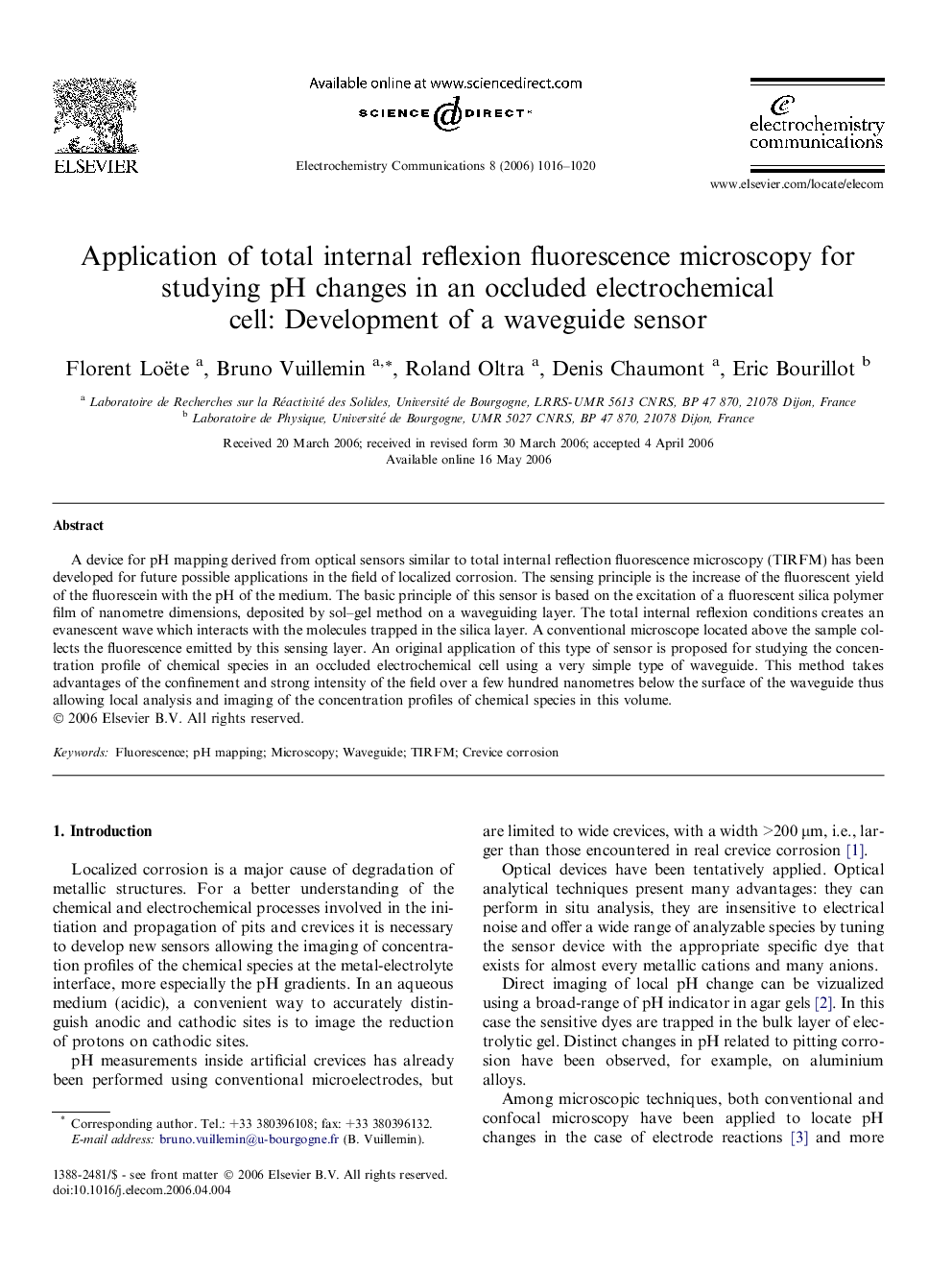| Article ID | Journal | Published Year | Pages | File Type |
|---|---|---|---|---|
| 182454 | Electrochemistry Communications | 2006 | 5 Pages |
A device for pH mapping derived from optical sensors similar to total internal reflection fluorescence microscopy (TIRFM) has been developed for future possible applications in the field of localized corrosion. The sensing principle is the increase of the fluorescent yield of the fluorescein with the pH of the medium. The basic principle of this sensor is based on the excitation of a fluorescent silica polymer film of nanometre dimensions, deposited by sol–gel method on a waveguiding layer. The total internal reflexion conditions creates an evanescent wave which interacts with the molecules trapped in the silica layer. A conventional microscope located above the sample collects the fluorescence emitted by this sensing layer. An original application of this type of sensor is proposed for studying the concentration profile of chemical species in an occluded electrochemical cell using a very simple type of waveguide. This method takes advantages of the confinement and strong intensity of the field over a few hundred nanometres below the surface of the waveguide thus allowing local analysis and imaging of the concentration profiles of chemical species in this volume.
